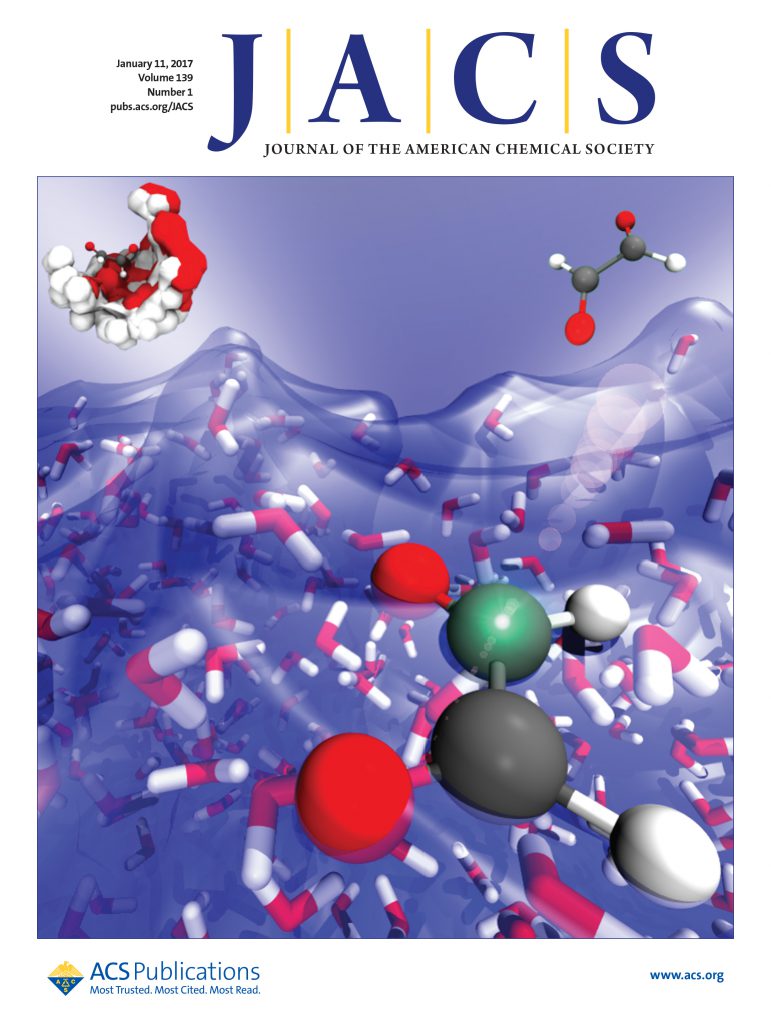Boosting the Selectivity in Oxygen Electrocatalysis Using Chiral Nanoparticles as Electron-Spin Filters
IF 14.4
1区 化学
Q1 CHEMISTRY, MULTIDISCIPLINARY
引用次数: 0
Abstract
Controlling the electron spin of oxygen-containing intermediates is crucial for efficient oxygen electrocatalysis toward clean energy technologies such as fuel cells and water electrolysis. Current strategies for controlling the electron spins rely mainly on tuning the chemical structure of the oxygen electrocatalyst, which is often hardly achieved for metal and oxide electrocatalysts. The chiral-induced spin selectivity (CISS) effect, a significant discovery in chiral spintronics, represents an alternative approach for tuning the spin selectivity of oxygen electrocatalysts. Here we demonstrate the use of intrinsic chiral nanoparticles as electron-spin filters to tune the selectivity in oxygen electrocatalytic reactions. Chiral Au nanoparticles with a concave vortex cube structure were employed as the chiral substrate, exhibiting highly tunable optical chirality and intriguing CISS-like effect. As model systems, the catalytically active components such as Pt or Ni(OH)2 are overgrown onto chiral Au nanoparticles to construct the chiral hybrid electrocatalysts. Remarkably, both cases show chirality-dependent tunable activities over oxygen reduction/evolution reactions, respectively. The insights gained from this work not only shed light on the underlying mechanisms dictating the CISS-enhanced oxygen electrocatalysis by chiral nanoparticles but also provide an important knowledge framework that guides the rational design of chiral electrocatalysts toward oxygen electrocatalysis.

手性纳米粒子作为电子自旋过滤器提高氧电催化选择性
控制含氧中间体的电子自旋对于燃料电池和水电解等清洁能源技术的高效氧电催化至关重要。目前控制电子自旋的策略主要依赖于调整氧电催化剂的化学结构,这对于金属和氧化物电催化剂来说通常很难实现。手性诱导自旋选择性(CISS)效应是手性自旋电子学中的一个重要发现,它代表了调节氧电催化剂自旋选择性的另一种方法。在这里,我们展示了使用本征性手性纳米粒子作为电子自旋过滤器来调节氧电催化反应的选择性。采用具有凹涡立方结构的手性金纳米颗粒作为手性衬底,具有高度可调的光学手性和有趣的类ciss效应。作为模型体系,将Pt或Ni(OH)2等具有催化活性的组分生长在手性Au纳米颗粒上,构建手性杂化电催化剂。值得注意的是,这两种化合物在氧还原/演化反应中分别表现出手性依赖的可调活性。这项工作不仅揭示了手性纳米颗粒增强csis氧电催化的潜在机制,而且为指导手性电催化剂的合理设计提供了重要的知识框架。
本文章由计算机程序翻译,如有差异,请以英文原文为准。
求助全文
约1分钟内获得全文
求助全文
来源期刊
CiteScore
24.40
自引率
6.00%
发文量
2398
审稿时长
1.6 months
期刊介绍:
The flagship journal of the American Chemical Society, known as the Journal of the American Chemical Society (JACS), has been a prestigious publication since its establishment in 1879. It holds a preeminent position in the field of chemistry and related interdisciplinary sciences. JACS is committed to disseminating cutting-edge research papers, covering a wide range of topics, and encompasses approximately 19,000 pages of Articles, Communications, and Perspectives annually. With a weekly publication frequency, JACS plays a vital role in advancing the field of chemistry by providing essential research.

 求助内容:
求助内容: 应助结果提醒方式:
应助结果提醒方式:


